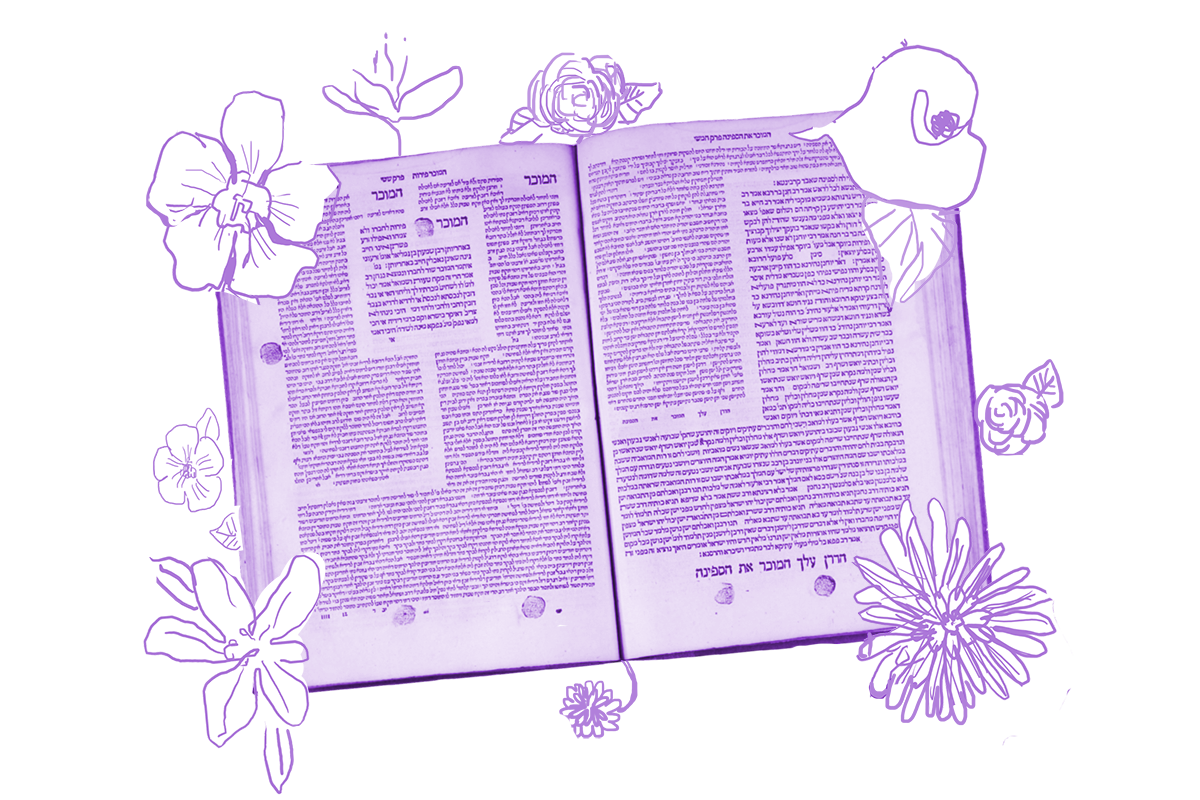At the bottom of yesterday’s daf, we were introduced to a law taught by Rabbi Yehuda:
Rabbi Yehuda says: (A priest) would fill one cup with the mixed blood, so that if one of the (cups with the collected blood of one of the paschal offerings) were to spill, it would be found that this cup would render the sacrifice valid.
On today’s daf, the rabbis contested the validity of this practice of collecting the mix of blood from the temple floor and offering it on the altar, pointing out that if blood had spilled directly on the floor rather than initially being collected in a vessel, it would be invalid. The Gemara goes back and forth, imagining challenges the rabbis might pose to Rabbi Yehuda’s position, and how he would respond, before continuing:
Rabbi Yehuda said to the rabbis: According to your statement, why do they plug the courtyard?
The rabbis said to him: It is praise for the sons of Aaron that they should walk in blood up to their ankles.
Apparently, it was the practice on the eve of Passover to plug the drains in the Temple such that blood would pool on the floor. Rabbi Yehuda gestures to this as strong proof for his position — that the practice was to collect a cup of mixed blood from the floor and sprinkle it. The rabbis, however, respond with a rather stunning image: This pooling of blood is not for any ritual purpose, but because there’s something spiritually valuable and viscerally significant about the priests wading through pools of sacrificial blood.
That image might feel deeply disturbing, or at the very least not compelling, to many contemporary readers. It’s also startling to imagine that enough blood was spilled in the Temple that it pooled several inches deep. But remember that this was the eve of Passover, when everyone was making a paschal offering. (On other holidays, only communal offerings were made, and on regular days it would depend on individual circumstances.) Curiously, neither here nor in Tractate Pesachim where this same teaching is recorded is this statement expanded upon by the most prominent commentators. Seemingly, they found it to be self-evident.
Perhaps the priests wading through a pool of blood was a sign of their love and dedication to the Temple and its service. Or perhaps the blood is a sign of covenant. The Passover offering is connected, both narratively (in Exodus) and legally, to the blood of circumcision, a physical expression of the covenant between God and the Jewish people. Only circumcised people can offer it, and various midrashim envision all the Israelite men immediately circumcising themselves in Egypt in order to offer this sacrifice. Given this, perhaps the visceral experience of wading through covenantal blood is also a reminder of our relationship to God. Rabbi Ovadiah Yosef, the late Sephardic chief rabbi of Israel, makes this connection explicitly, writing that just as it is praiseworthy for the priests to wade through the blood of the Passover sacrifice, so it is praiseworthy for the mohel’s hand to be covered in the blood of circumcision.
The Gemara, however, immediately raises a series of more formalist objections to this idea. First it suggests that the blood interposes between the priests and the floor, which is not supposed to happen — priests are meant to be in direct contact with the floor. But the Gemara determines that only dry substances interpose and blood is moist.
Then it suggests that blood would soil the priestly garments, which would render any performed rites invalid. And lest you think that the priests simply raised their garments so they wouldn’t touch the floor and get dirty, the Gemara reminds us that priestly garments are meant to fit precisely. The Gemara resolves this challenge too, suggesting that they only walked through blood while performing actions like carrying sacrificial limbs to the ramp of the altar, which is not a formal rite. But is that so? The Gemara cites a teaching that carrying limbs to the altar is in fact a rite, concluding:
Rather, (the priests would walk in the blood) while carrying wood to the wood pile on the altar, which is not a rite.
Having concluded that the tradition of walking in blood was in fact only practiced in this very specific circumstance of wood carrying, the Gemara now has a logistical follow-up:
How did they walk to the rites (without soiling their garments)? They would walk on platforms.
With this, the Gemara concludes its discussion. But in doing so, it has rendered the original statement almost unrecognizable. Whereas the rabbis appeared to be making a sweeping declaration, a spiritual signifier in contrast to Rabbi Yehuda’s legalistic explanation, the Gemara struggles to reconcile that declaration with our formal restrictions on what constitutes a valid service. We’ve spent over thirty pages discussing how every detail of a sacrifice and the person performing it must be perfect and unblemished; for the Gemara, this image of priests wading ankle-deep through blood, however powerful, does not accord with the image of sacrifice as orchestrated perfection.
Read all of Zevachim 35 on Sefaria.
This piece originally appeared in a My Jewish Learning Daf Yomi email newsletter sent on October 19, 2025. If you are interested in receiving the newsletter, sign up here.
With your help, My Jewish Learning can provide endless opportunities for learning, connection and discovery.



